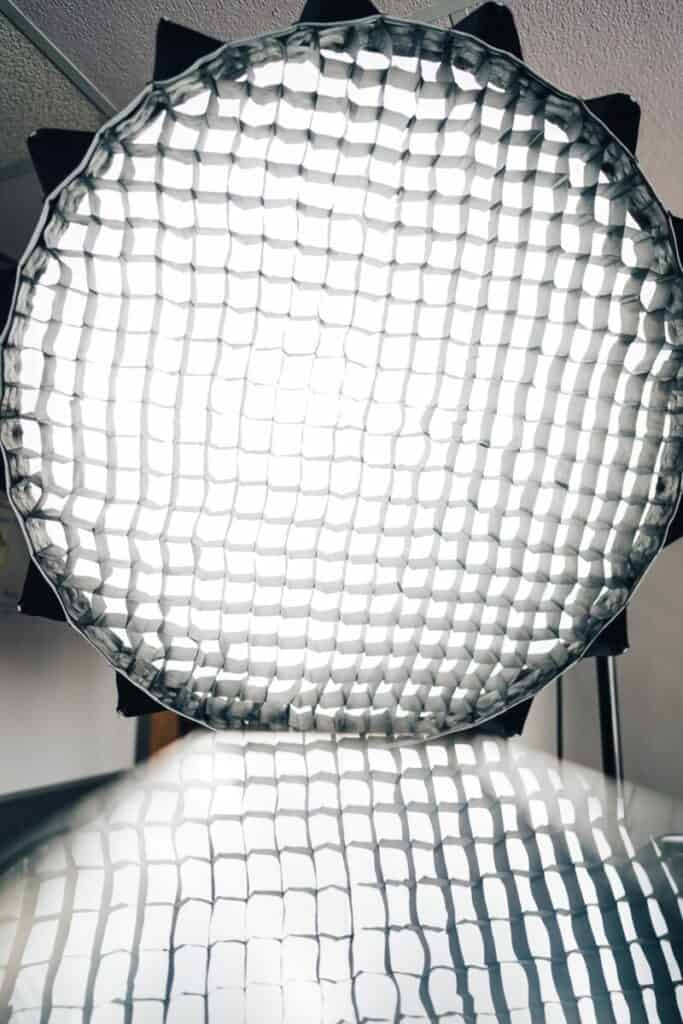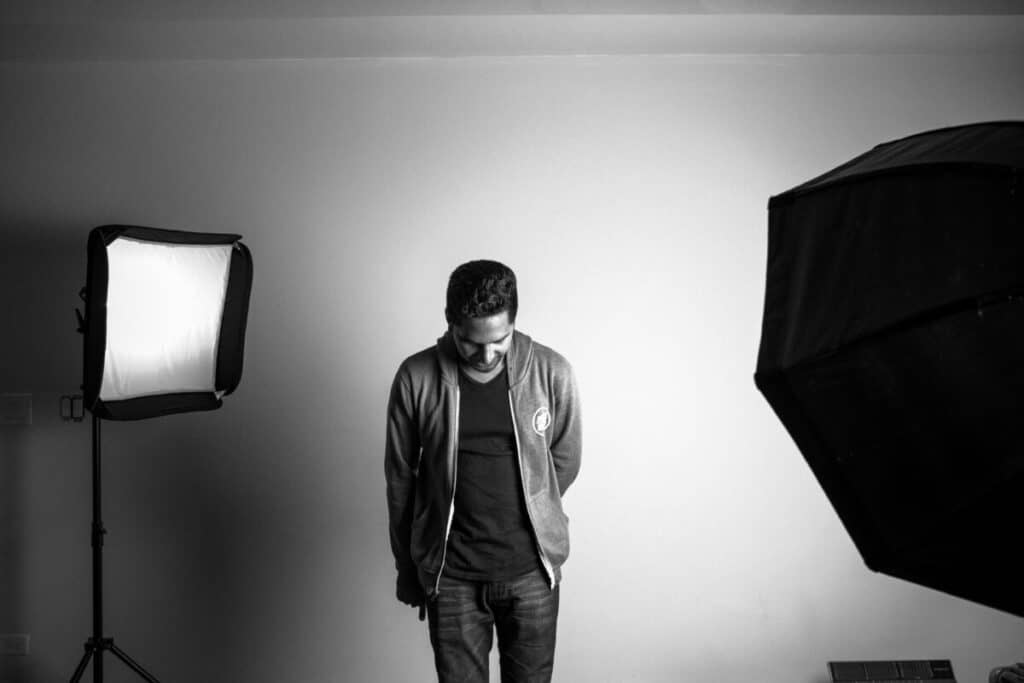Capturing photos is less about the price of your DSLR and more about the way you control light to capture the most pleasing image. In using artificial light, you have the drawback of dealing with harsh shadows and very bright highlights. But which is better between a softbox and diffuser?
A softbox is better at diffusing the light while maintaining direction in most forms of photography like fashion, product, and portrait. However, if you don’t use artificial lights aside from your camera’s flash, you can have similar light softening with a diffuser.
In this article, you will learn about the various pros and cons of each of the diffusing systems that help DSLR photographers get superior results.

Diffuser: A Brief Overview
DSLR cameras have made professional photography accessible to everyone. However, a photographer’s role isn’t as much in the equipment he uses but in how he uses the equipment to control light.
DSLR cameras have auto-mode that allows beginners to take mobile-phone tier photos with a higher number of pixels. But professional photographers control the shutter speed, and it is often high enough that a much more considerable amount of light needs to pass through in a fraction of the time for the photo to be lit right.
That is an art and a science. While the composition and light balance is the artistic side of professional photography, lighting logistics are the science behind it. As you may know, flash has become synonymous with photography because of how often it is used. While it lights the subject, it also tends to create harsh shadows. As a result, the image has high contrast and doesn’t look pleasing.
That is where diffusers become relevant because they help broaden the distribution of light instead of having it directed too narrowly at the subject. That results in the softening of edges between highlights and shadows in the photo.
A diffuser is a must-have for any versatile photographer. However, it has its drawbacks in certain situations, so it is advisable that a budding photographer learns the different pros and cons of using one for their flash.
Pros of Using a Diffuser
The following are some of the advantages of having a diffuser in your arsenal.
Avoid Irreversible Contrast and Sharpness
In situations where you need to rely on flash, the last thing you want is for the photo to have such a difference between shadows and highlights that you cannot edit it in photoshop or even lightroom to get remotely acceptable results.
Ideally, you would want the image to look exactly as you see with your bare eyes so you can edit it to look however you want it to look once you have captured the image raw. That can be achieved by diffusing the flash.
Use Flash Without the Disadvantages
Despite flash becoming synonymous with photography, most professional photographers want to avoid using it because it introduces an artificial element too early into the photography process.
However, some situations require flash because the image needs a higher shutter speed or the natural light is too low. Without diffusion, this makes the image look fash-lit. A diffuser allows the picture to look naturally lit.
Extremely Portable
Unlike a softbox, a diffuser can come in minimal size and be used with the flash. Therefore, you don’t need to pack lighting equipment and bulky softboxes. For naturalists, this is the best way to keep a minimal backup for poorly-lit situations while maintaining their preference for natural light.
Cons of Using a Diffuser
Despite being a necessity for anyone who uses flash, the diffuser has two disadvantages you should keep in mind.
Less Directional Control
The critical problem with using a diffuser is that it can also scatter artificial light too much for the subject to be adequately lit while it can mimic natural light. Whether the diffuser involves a large panel placed in front of artificial light or a flash-diffuser mounted on your camera, the direction of light is only partially in your hands.
Not Useful Enough for Some Images
Diffusers, like a lot of photography equipment, have their limits. In specific settings, you will notice that the light is not spread well despite using a diffuser. That gives one the worst of both worlds where the photo looks artificially lit but has an amateur vibe. The best way to handle such situations is to use double diffusion.
Softbox: A Brief Overview
As mentioned above, flash can light a subject too harshly for the contrast to be professionally acceptable. It also has another drawback: it is attached to the camera. If you want artificial light to come from a particular spot, you will need a photography light.
This light is triggered at the same time as the flash. Usually, this is achieved by mounting the light’s remote trigger on the flash. These lights are often brighter than flash and create more obvious directional contrast.

Consequently, they too require diffusion. But because of how these lights are set up, a diffusion panel will scatter the light too much and make the light seem omnipresent. That works for natural-looking photos, but if you want to make the light appear like it is coming from a particular direction, you need to add a containment mechanism.
The combination of diffusion and containment brings about softboxes, which help you diffuse the light while still making it appear like it is coming from a specific direction.
Most professional photographers engaged in fashion or product photography have softboxes. But budding photographers should know the pros and cons of these add-ons before deciding to purchase one.
Check out my article on softboxes, if they should come with lights.
Pros of Softboxes
The following section looks at the advantages you have for owning a softbox.
Take Amazing Product Photos
A softbox allows you to use artificial lights to light subjects from different directions to different degrees. That can help you take fantastic product photos where you highlight various aspects of the product while keeping any part of the item from looking too dark or bright. That applies to everything from small products like watches to large ones like cars.
Makes Indoor Fashion Photography Possible
There are two types of photography in fashion: editorial and catalog. Catalog photography happens indoors and removes distracting elements from the image, while editorial photography tells a story featuring the outfit or the fashion accessory.
While editorial photos can be taken outdoors, catalog photography requires better control of lighting, and softboxes allow photographers to leverage three-point lighting to create a compelling image that looks three dimensional. A picture would look flat with direct flash light, and with an undiffused directional light, it would look unprofessional.
Cons of Softboxes
While you should have a softbox at some point in your career, you should know their drawbacks to make an informed decision.
Light Manipulation Is Obvious
With the degree of control that softboxes provide comes the disadvantage where an informed audience can see that the photos are professionally lit. This isn’t a drawback to those who work in a field where artificial lighting is the norm (fashion, product, and portrait) but photographers who pride themselves on naturally lighting their subjects are better off with diffusion panels.
Bulkier Than Diffusers
If you don’t travel with more than your DSLR carry-case, you can’t bring a softbox along. Softbox and artificial lighting make for an elaborate setup that takes time to pack, unpack, assemble, and carry.
Which One Should You Use?
Diffusers and softboxes both help soften the light, so the shadows aren’t too harsh, and the picture doesn’t have high obligate contrast. You should use a softbox if you work with photography lights, but if you only rely on your camera’s flash, a diffuser mounted on top can sufficiently scatter the light for good photos.
Conclusion
While DSLR photography is becoming more accessible, the mastery of the art form depends on how well you can control the light. Artificial light and flash prove helpful in specific contexts but are too harsh and directional. To make your photos look pleasing, you must soften the light with a diffuser in most cases and with a softbox if you use artificial lights for product or fashion photography.
Sources
- Academia:Softbox Lighting Techniques for Professional Photographers
- North Western: Depth from Diffusion
Recent Posts
QuickTime is a vital app for many Mac users, and if you’ve recently bought a new microphone, you might wonder how to use it optimally. QuickTime cannot record audio content if it doesn’t have...
Every microphone leaves a unique signature on the quality of its output. If you’re a podcaster trying to melt your way into your audience’s hearts, a muddy, distorted recording won’t cut it....
